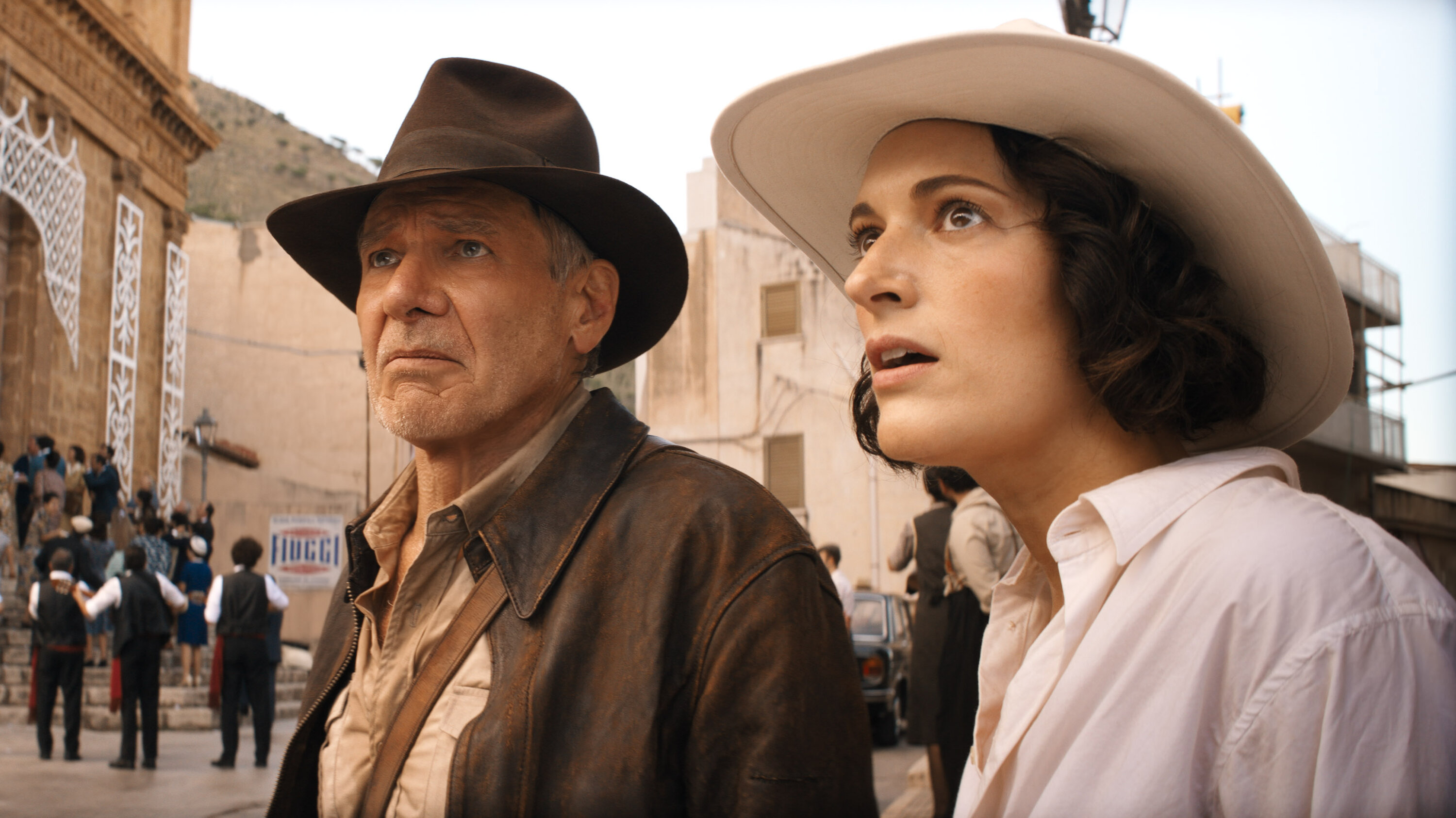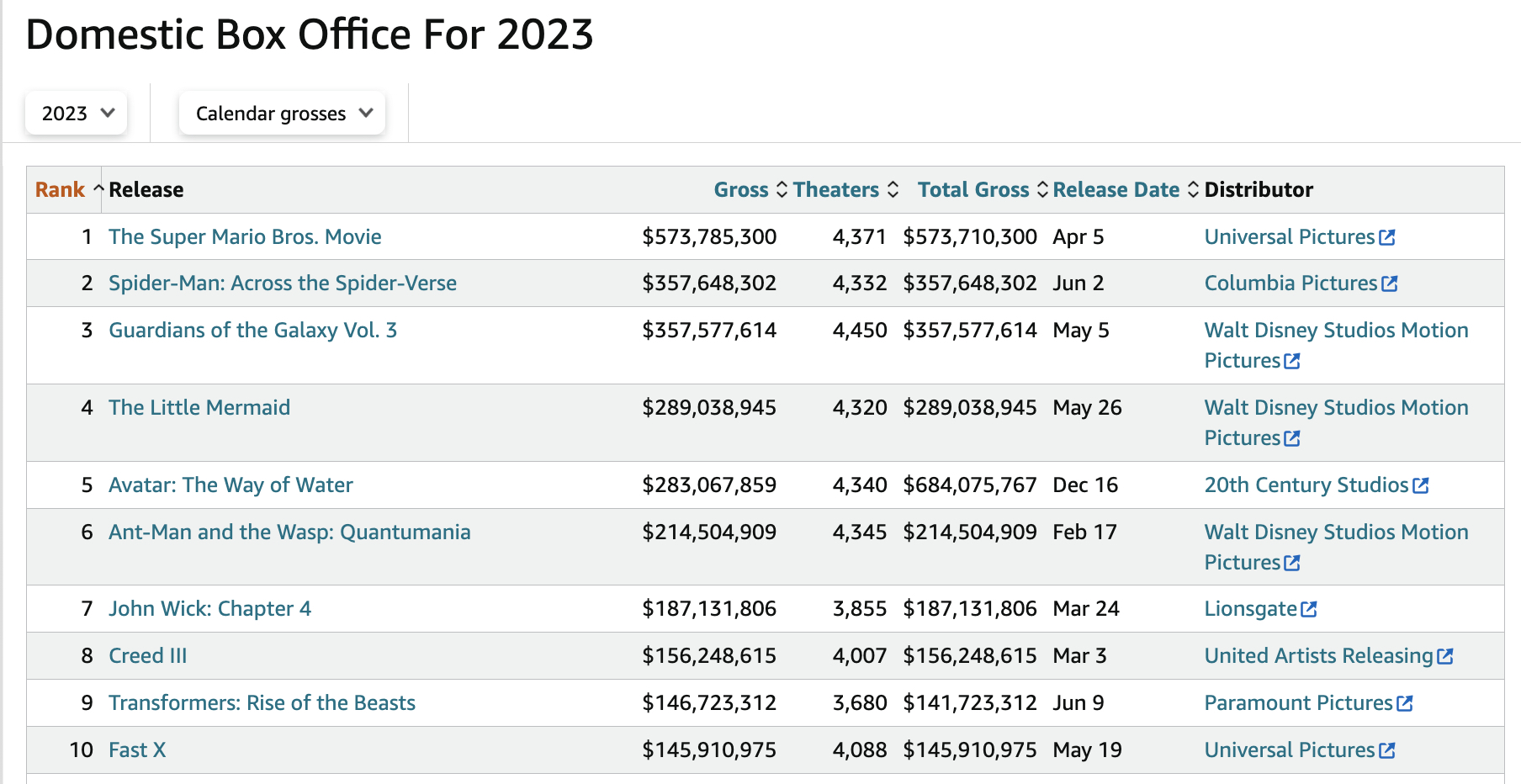
For the third consecutive week of July 4, Next TV drove the family to Goodyear, Arizona to watch the 17-year-old play club baseball in 112-degree weather.
Once again, we sought relief from the oppressive desert sun via the powerful industrial air-conditioning of a local Harkins Theater, where we indulged in a summer blockbuster.
Two years ago, with the Delta strain surging, we were shocked — yes, shocked! — by the fact that Universal's ninth Fast & Furious sequel utterly packed Harkins’ Theatre 4. This was a franchise so creatively played out that cars were flying into outer space on rescue missions. But still, the suburban Phoenix locals came, risking serious viral illness to do it.
Also Read: We’re Not Just Imagining It, Netflix Viewing Really Is Down From Last Year
So we assumed that despite its tepid reviews, the movie house hosting this fifth and supposedly “final” Indiana Jones sequel would be, on this typically scorching Arizona day, filled to capacity, as well.
After all, if Vin Diesel can take a franchise so reduced to a narrative parody shell of itself and open F9: The Fast Saga to over $70 million domestically, Disney should be able to regurgitate one swashbuckling scene after another with fabled octogenarian star Harrison Ford — which it did — and sleepwalk to a solid theatrical opening for Indiana Jones and the Dial of Destiny.
But Harkins had plenty of cushy recliners still available when the lights finally dimmed, at the ambient temp dipped below 110 Fahrenheit, at 6 p.m. One hour into the interminable 2:24 runtime, the kindly mom with the British accent sitting next to Next TV started, politely as she could, checking her Facebook. The 17-year-old shortstop on the other side of Next TV started asking, not as politely, “When does this this POS end?”
Nope. Like a doomed P-22 trainer perilously floating over a sleepy West Los Angeles golf course, this sputtering cinematic enterprise, piloted by a man who was once one of Hollywood’s most bankable movie stars, and filled with cinematic stunts and story devices that once felt fresh, crashed hard.
In weekend No. 2, Indiana Jones and the Dial of Destiny declined by 56% from its so-so $60 million domestic premiere revenue mark the weekend before.
How much can we read into this about the health of Disney? The theatrical movie business? The broader video business?
We’re not talking about, say, last year's Top Gun: Maverick, for which Tom Cruise and the rest of the Paramount brain trust dug creatively deep, taking the time, effort and dollars it took to develop a sequel story that worked and emotionally engaged with moviegoers.
Produced at a reported $300 million, Indiana Jones 5 is a derivative turkey that has no business flying high in Phoenix or anywhere else. Its failure isn't quite as fiscally conspicuous as the previous Box Office Disaster of the Month, Warner Bros. Discovery's The Flash.
But it's worth observing.
Once all the foreign receipts are in, IJ5 should ultimately surpass around $400 million worldwide, and fit right in with a host of creatively bereft sequels and reboots released so far in 2023 — Transformers: Rise of the Beast, John Wick: Chapter 4 and Ant-Man and the Wasp: Quantumania among them — that have recently earned their keep at the global box office the lazy, safe, not-so-satisfying-to-the-audience way.
Or as one of the captains of our current cottage reboots/remakes industry, Warner Bros. Discovery CEO David Zaslav, might lament, can you believe we haven’t slapped together another Superman movie lately?
In February, Next TV devoted one of its similar thumb-sucking exercises to the M. Night Shyamalan movie Knock at the Cabin. We wondered, what did it mean if a decent Shyamalan genre film couldn't any longer kick down the door for a significant North American theatrical opening?
Sure, the North American box office is still pacing way down from 2019. But what about the movie story-telling format in general? It's not like we're seeing a bunch of movie hits on subscription streaming these days, either.
Netflix, by far the biggest SVOD both globally and in North America, has had only one film so far draw more than 90 million viewing hours in a single week on its global measurement platform this year, action-thriller The Mother starring Jennifer Lopez.
Last year, four Netflix original films blew by that benchmark -- The Adam Project, Gray Man, Purple Hearts and Glass Onion, some several times.
Notably, equity research company MoffettNathanson put out a report showing that only 9% of Netflix viewing these days comes from its original films.

Thirty percent of Netflix viewing time, MoffettNathanson also noted, comes from original scripted series. And that's where the platform's biggest hits are.
Despite a narrow overall year-over-year downturn in viewing in 2023, Netflix has had five English-language TV series so far this year that have produced more than 100 million viewing hours in a single week for an individual season of the show.
Of course, it's mathematically logical that a full season of 50-minute-long episodes for an original series might have a viewership time advantage over a single two-hour movie.
And we could get into Mrs. Next TV's suggestion — that modern audiences, with her gnat-like attention span, prefer 50-minute chapters vs. full-length 2:21 movies. (She doesn't read Next TV, so we’re safe unless you say something.)
But also notable: Most of Netflix’s hit shows this year are based on new intellectual property, or at least IP that was original to video, such as a first-time novel adaptation — Ginny & Georgia, Outer Banks, Kaleidoscope and The Night Agent.
Queen Charlotte is a spinoff … but one from a powerful Netflix original franchise, Bridgerton, conjured anew from whole cloth by producer Shonda Rhimes.
Conversely, the top 10 at the domestic box office this past weekend, according to Box Office Mojo, includes nary one entirely original asset.

Nine of the top 10 movies are sequels or reboots. And the one that isn't -- the most successful film at the North American and global box offices so far this year, Universal's The Super Mario Bros. Movie -- was based on a super-popular 1980s video game.
Of course, one of this year's more successful original TV series, HBO's The Last of Us, was derived by Sony from a multiplayer online game.
Perhaps gaming represents a Goldilocks source of IP for the video business? One that controls risk just enough for the bloodless wannabe moguls (uh, Dave?) currently running the movie industry, but also one which offers fresh narrative possibilities for an exhausted audience that's seen Indiana Jones tame Nazis with his bull whip one too many times.







